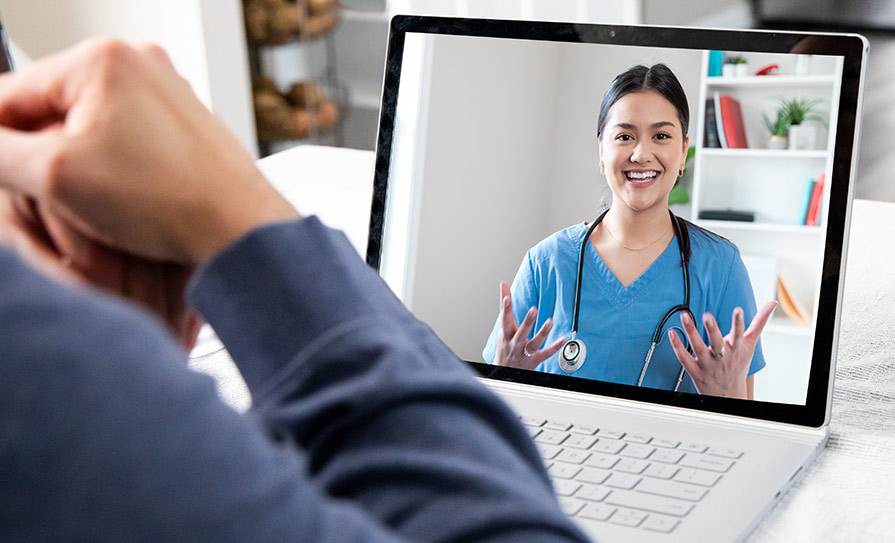
It is good to see evidence accruing on the use of remote consultations
While telemedicine use has decreased from the height of the Covid-19 crisis, it hasn’t gone away. I know colleagues varied widely in their response to virtual consulting. Some liked it, while others found it a markedly false experience that made them uncomfortable.
Now that the main driver for remote consulting has faded away, it’s timely to look at how telemedicine fits into the broader doctor-patient relationship paradigm.
For example, are there differences in treatment and follow-up when compared to in-person visits? It’s a question dealt with in a recently published study in Annals of Internal Medicine.
The authors from the Kaiser Permanente Division of Research specifically looked at whether longer-term use of telemedicine visits in clinical practice adequately address patients’ needs, increases the likelihood of subsequent follow-up visits, or is more likely to be followed by a serious health event requiring an emergency department visit or a hospital stay. Based on administrative and electronic health record data of over 1.5 million adult patients, it compared treatment and follow-up visits (practice, emergency department or hospitalisation) between primary care video or telephone consultations and in-person visits.
The results show that about half of all primary care visits within the study were telemedicine visits. Medication was prescribed during 47 per cent of in-person visits; 38 per cent of video consultations; and 35 per cent of telephone interactions. Just 1.3 per cent of in-person visits had a follow-up appointment within seven days of the initial appointment, while 6.2 per cent of video visits and 7.6 per cent of telephone visits had a follow-up appointment. Differences in the need for follow-up practice visits varied by clinical area and were largest after practice versus telephone visits for acute pain conditions and smallest after practice versus telephone visits for mental health. Overall, the rates of follow-up emergency department visit and hospitalisations were low, and differences between in-person visits and telemedicine visits were small.
A separate Canadian study looked at whether the shift to virtual consultations during the pandemic was associated with increased emergency department visits. Researchers looked at data from Ontario, Canada’s largest province, on patients enrolled with a physician, to see if there was a link between the number of emergency department visits and virtual visits between 1 April 2020 and 1 March 2021.
“We did not find evidence that enrolled patients substituted emergency department visits because of less availability of in-person care,” Dr Jasmin Kantarevic (Phd), Chief Economist, Ontario Medical Association and co-authors, wrote in the Canadian Medical Association Journal. “This finding is important given concerns about virtual care adversely affecting quality of care, leading to calls to substantially reduce care delivered virtually.”
Researchers controlled for patient complexity and other factors. There was variability between practitioners, with fewer emergency department visits linked to patients with female physicians and in urban areas. More medically complex patients and those in rural regions had higher rates of emergency department visits.
Meanwhile, the American College of Physicians (ACP) has called for the introduction of meaningful performance measures to evaluate telemedicine in a new position paper, ‘Performance measures for physicians providing clinical care using telemedicine.’ The new recommendations are designed to ensure that as measures are developed to gauge telemedicine services they are evidence-based, methodologically sound, and clinically meaningful.
The College recommends that any performance measure used to evaluate telemedicine visits should adhere to the same criteria as in-person visits. It also cautions that telemedicine visits need to be incorporated into electronic health records systems, so that those visits do not become standalone encounters that further fragment care delivery. Crucially, the ACP recommends that measures should be used to evaluate the impact of telemedicine on under-resourced communities to ensure that access and quality of care are not harmed in communities that lack digital access.
“The same principles that we apply to quality measurement for in-person care should also be applied to the development of measures for telemedicine,” Dr Ryan Mire, President of the ACP, said in a statement accompanying the position paper. “The goal in all of our patient interactions is to provide high-quality care. Telemedicine can be an important tool in doing so and we need to make sure that measures encourage that high-quality without unnecessary burden, particularly for under-resourced communities and patients.”
It’s good to see some serious analysis of telemedicine. While it was admirable to witness the flexibility of doctors in suddenly changing their mode of practice in the face of a sudden pandemic, it’s now time to objectively assess how best to incorporate telemedicine into routine practice.





Leave a Reply
You must be logged in to post a comment.